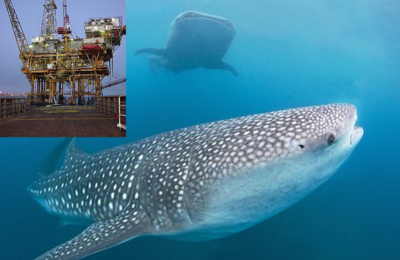Bond, M. E., Tolentino, E., Mangubhai, S., & Howey, L. A. (2015). Vertical and horizontal movements of a silvertip shark (Carcharhinus albimarginatus) in the Fijian archipelago. Animal Biotelemetry, 3(1), 1-7. DOI: 10.1186/s40317-015-0055-6

Introduction
Shark finning is a practice wherein nearly every fin is removed from the body to be sold for use in various foods. The South Pacific, including Fiji, exports vast quantities of shark fins to the market in Hong Kong, China. Based on the types of fishing gear used (longlines and gillnets), it is assumed that most of the fins come from pelagic (open ocean) species. Silvertip sharks are one of several reef-associated shark species in the Fijian archipelago. They are a slow-growing species that reach a maximum length of about 3 meters. Silvertip sharks are considered apex predators, though they have a varied diet including benthic and pelagic fish, rays, other sharks and cephalopods (like squid). The species is currently classified as ‘near-threatened’ by the International Union for Conservation of Nature (IUCN). The horizontal movement of silvertips has not been well studied to date though they are known to be ‘habitat-faithful’ meaning silvertips do not migrate far from home reefs. This habitat-faithful trait means that isolated populations (those that do not mix with other populations of silvertips) are particularly at risk of overexploitation by the shark finning trade. No data on the population status of silvertips in the Fijian archipelago exists though the tuna longline fishery notes high levels of by-catch. This study published in the journal Animal Biotelemetry documented a silvertip shark’s depth and thermal habitat use as an important step towards learning more about this understudied species.

Methods
Satellite telemetry was used to track the movements (both horizontal and vertical) of silvertip sharks along the Great and North Astrolabe Reefs (Figure 2). Together, they form one of the world’s largest barrier reefs. These reefs are in healthy condition and contain a variety of habitats. Lagoon depths extend to 50 meters with areas of rock, seagrass and coral. The outer reef, with soft sediment and rubble ranges from 35 to over 65 meters. Beyond that, the reef wall drops to the ocean floor, over 1,600 meters.
On April 7, 2014, an immature female silvertip shark 115 cm in length was tagged. On April 18 the tag released due to attachment problems. Throughout this time, the tag recorded 15-minute interval measurements of depth, temperature, and light-level. All of the data collected on the tag was transmitted to the Argos satellite system. There were 2,182 records of temperature and depth. The shark ranged in depth from 0 to 381.9 m with a mean depth of 59.9 (+/- 38.5 m). The shark spent most of the time at depths shallower than 150 m and more than half of the time shallower than 50 m. Less than 3.1% of the time was spent in the upper 10 m (figure 3). Daytime depths were significantly deeper than night depths (Figure 4). And daily temperatures were significantly cooler than nighttime temperatures (Figure 5). The 3 deepest 15-minute records were during the night. There were no consecutive depth records below 200 m. This means that the trips to deeper water could not have lasted longer than 30-minutes as the tag collected data at 15-minute intervals.


Discussion
The shark’s depth varied considerably more during the day than at night, which indicates that silvertips may use a greater range of depth habitat during the day. Daily depth migrations, also called ‘diel vertical migrations’ (DVM), to deeper water are also seen in other shark species. Silvertips may follow this depth pattern to follow cephalopods, which comprise ~13% of their diet. Observed DVM behavior may also be explained by following preferred temperatures. Laboratory studies have found the some strategies maximize energy efficiency by foraging in warmer water (warm temperatures = increased metabolism) and resting in cooler temperatures (cold temperatures = reduced metabolism). Silvertips may also be avoiding predators such as other, larger shark individuals. Predator avoidance probably does not explain the deeper, short duration dives as they would likely be longer. Because this study tagged just one silvertip and the tag lasted a short time (12 days), the authors state that conclusions about the species should not be drawn from this study. Though it may be considered a model for future studies to develop an understanding of this species.
I am studying for my doctoral degree at the Stony Brook University School of Marine and Atmospheric Sciences. My research addresses fisheries and climate change in the Northwest Atlantic. In my free time, I like to cook and spend time outdoors, sometimes at the same time.


